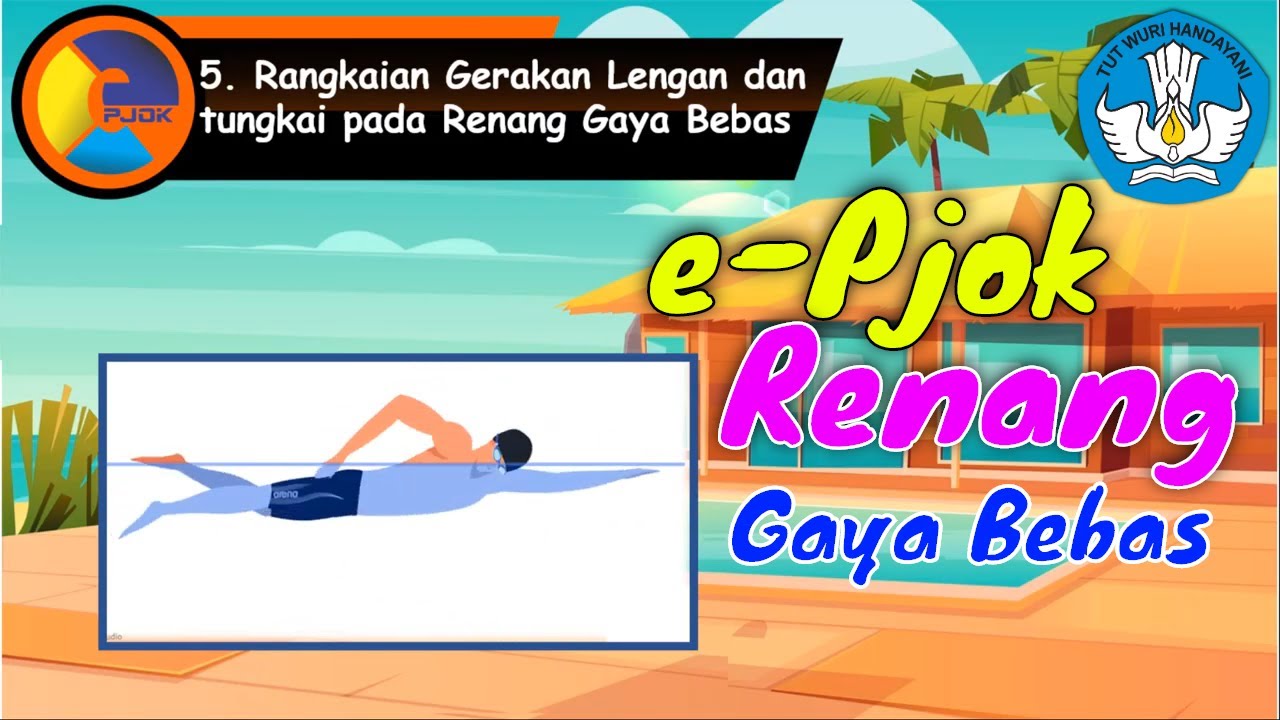#IDL_YUDHO.PRASETYO_SMAN 7 BPP_BALIKPAPAN
Summary
TLDRThis video script presents a lesson on aquatic activities, specifically focusing on swimming techniques for students. The instructor, Yudo Prasetyo, outlines key competencies in physical education, including basic rescue techniques in water and swimming skills such as freestyle strokes, breathing techniques, and movement coordination. Emphasizing discipline, teamwork, and perseverance, the video explains step-by-step how students should prepare, warm up, and practice fundamental swimming techniques like gliding, kicking, and arm movements. It concludes with a reminder of the importance of proper breathing and body position for efficient swimming, while encouraging students to monitor and improve their performance.
Takeaways
- 😀 Introduction to the lesson on swimming techniques, focusing on aquatic activities and the importance of water safety.
- 😀 The key competence is teaching students basic water rescue techniques and swimming strokes, emphasizing discipline and teamwork.
- 😀 Students will be tested on their ability to swim 50 meters in the freestyle stroke to assess their progress.
- 😀 Essential swimming equipment includes proper swimwear, dark-colored clothing if swimwear is unavailable, and swim supplies like towels and bags for changing.
- 😀 Warm-up exercises are crucial to avoid injury, with an emphasis on loosening muscles and adjusting to the water temperature.
- 😀 The importance of introducing students to water to help them overcome fear and panic, through breath-holding exercises in different positions.
- 😀 Basic swimming technique, such as streamlining the body, reduces water resistance for efficient gliding through the water.
- 😀 Proper leg movements are essential for maintaining stability and balance in the water, with a focus on consistent, relaxed kicks.
- 😀 Hand movements in freestyle swimming are broken down into three phases: pull, push, and recovery, emphasizing proper technique to avoid mistakes.
- 😀 Breath control is emphasized, teaching students to breathe properly through the mouth to avoid water entering the nose, preventing panic.
- 😀 The importance of monitoring each student's individual progress and providing feedback on their freestyle technique for continuous improvement.
Q & A
What is the main focus of the lesson in the transcript?
-The main focus of the lesson is on aquatic activities, specifically teaching swimming techniques, with an emphasis on basic rescue skills and swimming techniques for the freestyle stroke.
What are the core competencies that students need to master in this lesson?
-Students need to master basic water rescue skills, freestyle swimming techniques (leg, arm, and breathing coordination), and the ability to swim 50 meters using the freestyle stroke.
How does the instructor prepare students for the swimming lesson?
-The instructor prepares students by ensuring they have the appropriate swimming gear (e.g., swimsuit or dark-colored clothes), a towel, and a change of clothes. The lesson also includes a warm-up to prevent injuries and to adjust students' body temperatures to the conditions of the water.
What is the purpose of the warm-up in this swimming lesson?
-The warm-up is designed to loosen muscles, prevent injury, and regulate body temperature so that students are prepared for the swimming session and can adapt to the water temperature.
What is the first skill students are introduced to in the water?
-The first skill students are introduced to is water familiarization, which helps them adapt to the water and avoid panic. Techniques like breath-holding and underwater resistance exercises are used.
What is the importance of teaching proper leg movements in freestyle swimming?
-Proper leg movements in freestyle swimming help students maintain balance in the water, provide propulsion, and ensure efficient movement during the swim.
How does the instructor demonstrate the arm movements for freestyle swimming?
-The instructor breaks down the arm movements into three phases: Pull (starting from the front and pulling toward the chest), Push (extending the arm backward), and Recovery (lifting the arm out of the water and preparing it for the next stroke).
Why is the recovery phase of the arm movement critical in freestyle swimming?
-The recovery phase is essential because it ensures that the arm is properly repositioned for the next stroke without resistance, which allows for smooth and efficient movement in the water.
What technique does the instructor recommend for breathing while swimming freestyle?
-The instructor recommends breathing through the mouth while turning the head to the side, either left or right, after completing the arm pull. The head should immediately return to the water after taking a breath, and exhale through the nose while the head is submerged.
How does the instructor assess students' progress during the lesson?
-The instructor continuously monitors each student's technique, looking at their body position, arm and leg movements, and breathing coordination. This helps identify areas for improvement and ensures that students are mastering the freestyle stroke correctly.
Outlines

此内容仅限付费用户访问。 请升级后访问。
立即升级Mindmap

此内容仅限付费用户访问。 请升级后访问。
立即升级Keywords

此内容仅限付费用户访问。 请升级后访问。
立即升级Highlights

此内容仅限付费用户访问。 请升级后访问。
立即升级Transcripts

此内容仅限付费用户访问。 请升级后访问。
立即升级浏览更多相关视频

Teknik Mengapung Water Trappen - Materi PJJ PJOK SD

PEMBELAJARAN RENANG GAYA BEBAS

Materi PJOK Renang Gaya Bebas

Unit 2 Extracurricular Activities | Materi Bahasa Inggris kelas 7 SMP Bab 5 This Is My School

RENANG GAYA DADA YANG BENAR

Rangkuman Materi PJOK Kelas 2 SD Semester Genap (2) || Kurikulum Merdeka ||
5.0 / 5 (0 votes)
